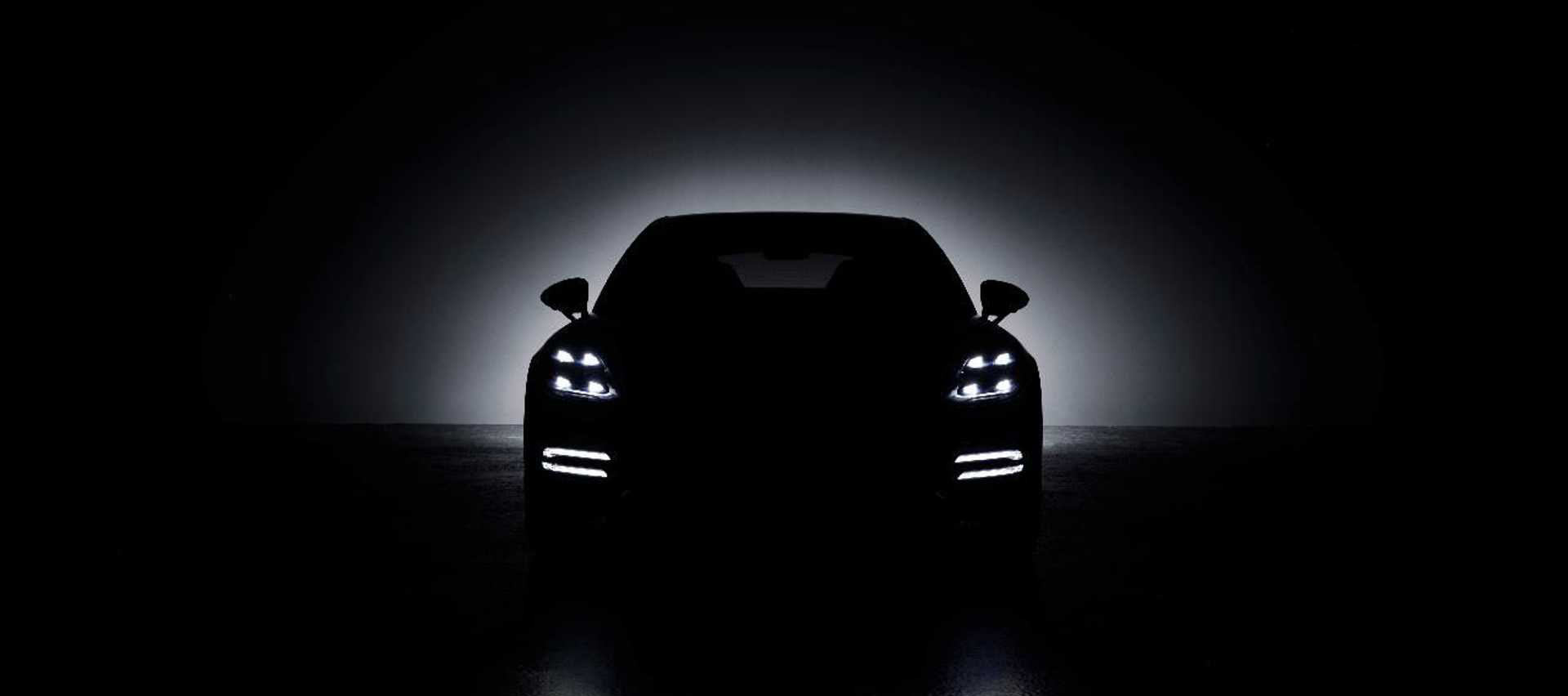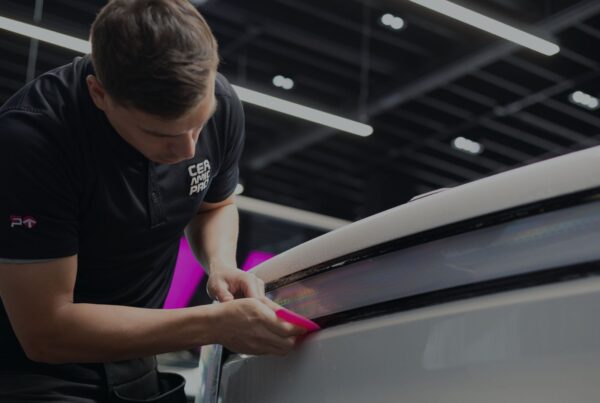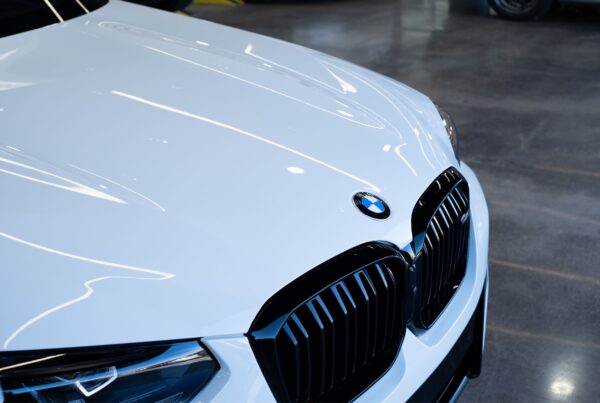A paint protection film is the best example of an aftermarket product that truly works as advertised. Its primary task is indeed – to protect the paint surface and other materials where it’s applied. PPF (which is an abbreviation for this super paint protection film) is a polyurethane-based substance. It’s transparent, and with some elevated brands, it can instantly heal if the top layer is scratched. So, is it a good idea to install PPF on new cars?
In short – absolutely. In fact, this is the best time to apply PPF – or elastomeric polymer film as the primary objective of protective paint films is to maintain the condition of what’s underneath from UV exposure, chemicals, light scratches, toxins, and road grime.
However, PPF is not for everyone. It is a premium product that is typically installed by certified and highly-trained professionals. And there are times when protection film installation is not recommended. So, let’s explore some of the pros and cons of having a clear bra or paint protection film bonded to your new car’s paint surface.
Does PPF Damage New Car Paint?
This type of material is completely safe to apply to your new car. In fact, most paint protection film customers opt to use this type of protective coating on the clear coat of vehicle’s paint vs a ceramic coating, traditional carnauba wax, or paint sealants due to its safe application. For those who are not aware, PPF is a thin, and uses a unique adhesive substance that bonds solidly to the substrate.
During the installation process, the clear paint protection film undergoes a multiple-stage installation, where it is fitted, cut, placed, and then activated by a liquid spray. The installer will use a squeegee to help apply the film to the painted surface. This is when the adhesive goes to work to attach to the substrate.
There are some vinyl materials or inferior quality protective films with cheap adhesives that will become quite sticky if water penetrates the top coat. In fact, this is more common than you’d think with vinyl wraps. But when it comes to a quality PPF like Ceramic Pro Kavaca Instant Healing Film, you’re 100% safe.
Can You Remove Protective Paint Film?
Yes – a protective film for cars can be easily removed. However, once it is removed, the same film can’t be reinstalled on another vehicle or the same. This is a great example why PPF is best suited for people who are either leasing a vehicle (that are going to return it and want to ensure they don’t have exterior paint damage), or those planning on keeping the vehicle for extended periods.
A high-quality protective film like Kavaca can hold up for 10 years on factory paint. And, if you decide to apply a professional-grade nano ceramic coating on top of that PPF, the combination can offer a lifetime of protection. In fact, companies like Ceramic Pro offer warranties for this type of paint protection package.
Can You Apply Paint Protection Film to Headlights?
Absolutely. Installing Ceramic Pro Kavaca Instant Healing paint protection film on high-exposed areas like the front end, the fender, front bumper, the hood, grille, side-view mirrors, door edges, and of course, the headlights and fog lights is a smart idea. Not only does it help to protect those areas from rock chips, tree branches, and other hard road debris, but it also helps to provide a shield against bug splatter, bird droppings, tree sap and other natural contaminants.
Here is where choosing the right PPF to protect automotive paint is important. Most of the automotive paint protection film solutions are not very hydrophobic – meaning that items tend to stick easily to the original paint. However, Kavaca is one of the only protection films that has an infusion of ceramic coating on the top layer. This makes it extremely slippery, meaning that normally sticky items are easier to remove.
This unique feature to Kavaca permits you to keep the front of your trucks, RV’s, big rigs, SUVs, and cars cleaner. It also removes the need to use harsh chemical cleaners and agents – that can damage your paint finish.
The Advantages of Applying PPF on a New Car
If you’re going to invest in a paint protection film to keep your new vehicle’s paintjob and other parts in mint condition, there are several advantages to consider.
Produces an enhanced finish. While some PPF’s might improve the shine of your vehicle, Ceramic Pro Kavaca is available in a gloss or matte finish. In fact, if you have a high gloss paintjob, you can apply Kavaca Matte – to instantly create a brilliant and customized exterior look and appeal.
Reduced orange peel and lack of glue marks. It’s common for some paint protection films to leave glue marks after the installation. Kavaca’s proprietary adhesive does not leave these marks or creates an orange peel finish.
Superior protection against chemicals and corrosion. Kavaca instant healing protective films are infused with four layers of material, each of them providing roadblocks for harmful contaminants or chemicals to penetrate. It also provides superior stain resistance and reduces paint damage due to stone chips.
Instant healing of minor scratches. Most of the top brands of car paint protection have self-healing properties. This means, that minor scratches can be fixed by a detailer, simply by applying direct heat – or with a blowing heat gun. Kavaca is the ONLY Instant Healing PPF on the market today. It uses nano technology to fill minor scratches within a few seconds.
High temperature resistance. This same nano-tech helps to provide a heat shield, which blocks UV and IR radiation from penetrating to the vehicles surface materials. This unique feature keeps headlights from fogging or fading, which maintains your on-road visibility.
A Limited Lifetime Warranty. Ceramic Pro and our network of more than 3,500 certified installers take pride in providing superior customer service. We prove this by offering a limited lifetime warranty on Kavaca Instant Healing PPF.
Disadvantages of Applying PPF on New Cars
It’s important to clarify that not all paint protection films are equal. Some are simply better and superior to others. As such, there are some things you should consider before taking the plunge with PPF.
Do your research. Before you have a professional place any film or coating on your car, do your due diligence. There are some good protection films for cars – but several ‘less-than-stellar’ ones as well.
Consider your options. There are several professional nano ceramic coatings that will provide superior protection for years. While they’re not as good as PPF for protecting from rock chips and larger road debris, they offer multiple benefits. Don’t be afraid to set up a consultation with a certified installer that offers both PPF and ceramic coating. They’ll guide you to the right product for your vehicle, budget, and needs.
This video will help you understand the difference between paint protection film and ceramic coating.
How long are you planning on keeping the vehicle? If you typically trade in your vehicle every few years, and want to have the best trade-in value, a PPF installation on the front end is a great, cost-effective option to consider. If you want to keep the vehicle for a long time, consider a full vehicle installation or a combination of PPF and nano ceramic coating.
Paint protection films are exceptional products for keeping your car, truck, SUV, RV, motorcycle, or commercial equipment looking factory fresh. And believe it or not, PPF is more affordable than you’d assume – especially when you have a new vehicle that requires less paint correction or prep work.
You’ve got the flexibility to select a PPF installation that is perfect for you. Whether you prefer a partial hood or clear bra install, or full vehicle coverage with a 10 year warranty or more, Ceramic Pro Kavaca offers an easily affordable solution. If you’re curious about paint protection film installation, click the button below to request a free estimate.






